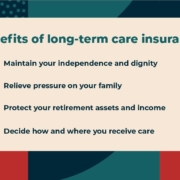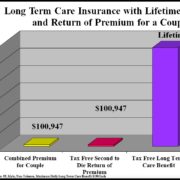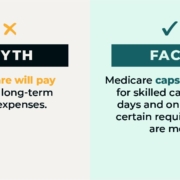How the Windfall Elimination Provision (WEP) Affects Social Security Benefits

Money Matters – Skloff Financial Group Question of the Month – November 1, 2022
By Aaron Skloff, AIF, CFA, MBA
Q: I read the articles ‘What Is the Best Age to Claim Social Security Benefits?’ Part 1, Part 2 and ‘What Is the Best Age to Claim Spousal Social Security Benefits?’ and ‘What Is the Best Age to Claim Survivor Social Security Benefits?’ Part 1, Part 2 and ‘How the Government Pension Offset (GPO) Affects Social Security Benefits‘. How does the Windfall Elimination Provision (WEP) affect Social Security Benefits?
The Problem – Your Social Security Benefits Could be Reduced by the Windfall Elimination Provision (WEP)
If you have a pension from a state or local government and the job was not covered by Social Security (you did not pay Social Security taxes) and you had earnings from a job that was covered by Social Security (you paid Social Security taxes), your Social Security benefits could be reduced by the Windfall Elimination Provision (WEP). Importantly, the Social Security Administration (SSA) does not show the impact of the WEP in your projected benefits. Those most likely to be affected include educators, police officers and firefighters who also worked at a second job or ‘retired’ and transitioned to a second career in the same or a different field.
The Solution – Understanding How Your Social Security Benefits Could be Reduced by the Windfall Elimination Provision (WEP)
Under the WEP, your benefits are reduced by up to 50% on the first $1,024 (in 2022) of your Average Indexed Monthly Earnings (AIME). The SSA uses the AIME to calculate your benefits, based on up to 35 years of your highest earnings. If you are not subject to the WEP, your full retirement age (FRA) benefit for 2022 is calculated as follows: 90% of the first $1,024 of AIME, plus 32% of AIME over $1,024 and through $6,172, plus 15% of AIME over $6,172. If you are subject to the WEP, you would substitute the 90% in your calculation by a percentage that matches the number of years of ‘substantial earnings’, as defined by the SSA. For each year beyond 20 years that you have substantial earnings, you add 5% to your 90% substitute. If you have 30 or more years of substantial earnings, the SSA does not apply the WEP. The WEP Guarantee Rule limits the reduction in benefits to no more than 50% of the pension attributable to post-1956 non-covered earnings. The following table is the level of ‘substantial earnings’, sampled in five-year increments, the SSA uses in its WEP calculation. The table thereafter is the percentage substitute based on years of substantial earnings.
Click to Enlarge
Click to Enlarge
Social Security Benefits With and Without the Windfall Elimination Provision (WEP). For example, if your AIME is $6,500 and you are not subject to the WEP, your FRA (based on the formula above) monthly benefit would be $2,618. If you are subject to the WEP and had 20 years of substantial earnings, you would substitute the 90% in the formula above with 40%, resulting in an FRA monthly benefit of $2,106. The tables below show the detailed calculations.
Click to Enlarge
Click to Enlarge
Strategies. If you have at least 20 years of substantial earning, you can reduce part of your WEP reduction. If you have 30 or more years of substantial earnings, you can eliminate your full WEP reduction. If you take a lump sum pension withdrawal (e.g.: to an IRA) from a non-covered pension in lieu of a defined payment period, you will not be subject to the WEP reduction after the in lieu of period. If the withdrawal is in lieu of a lifetime pension, the SSA calculates how long the WEP reduction applies. Withdrawals of the employee’s own contributions and interest made before the employee is eligible (defined by the SSA) to receive a pension are not pensions for WEP purposes if the employee forfeits all rights to the pension. This rule applies even if the employer paid the employee contributions.
Action Steps – Understand and Avoid the Windfall Elimination Provision (WEP)
Work closely with your Registered Investment Adviser (RIA) to better understand and avoid the Windfall Elimination Provision (WEP).
Aaron Skloff, Accredited Investment Fiduciary (AIF), Chartered Financial Analyst (CFA), Master of Business Administration (MBA) is CEO of Skloff Financial Group, a Registered Investment Advisory firm specializing in financial planning, investment management and benefits for small to middle sized companies. He can be contacted at www.skloff.com or 908-464-3060.















